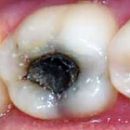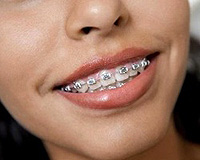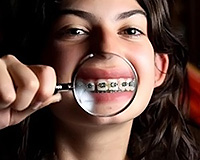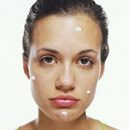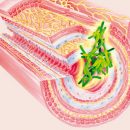Is it worth talking about the difficulty of life in the absence of teeth? Even if there is no one tooth, then this fact immediately causes certain discomfort. These are problems with chewing, conversation, and if there is no front tooth, here and smile awkwardly. What else threatens the lack of teeth?
Content
Types of prosthetics of teeth
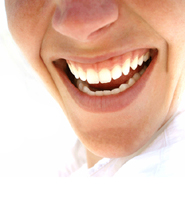 Prosthetics of teeth - This is the restoration of the structure and the function of partially or completely lost teeth.
Prosthetics of teeth - This is the restoration of the structure and the function of partially or completely lost teeth.
There are several types of dental prosthetics: installation of crowns, pen designs, as well as the complete restoration of the lost tooth due to the use of various prosthetics technologies.
Teeth prosthetics makes it possible to restore remote or lost diseases or injury to teeth. Modern dentistry and new teeth prosthetics technology make it possible to quickly and accurately select the necessary size, shape and color of new teeth to achieve a high cosmetic effect. Application of computer simulation allows you to create dentures with high accuracy. Now the dental prosthetics ceased to be a long and painful process.
Dental prosthetics can be removable and non-removable. Names speak for themselves - removable dentures can be removed from the oral cavity, non-removable - installed for constant wearing.
Removable dentures
Modern removable prostheses are indigenously different from old removable prostheses of our grandparents. The differences between modern prostheses - in new durable, flexible and safe materials and high technologies, allowing you to make a prosthesis suitable for all 100% with high accuracy.
Removable dentures are used with a complete or partial loss of teeth, in the latter case it is especially related to the loss of chewing teeth or even in case of loss of one chewing tooth.
Non-removable dentures
Failure dentures are different variants of structures consisting of one or more artificial teeth that replace missing teeth and attached to neighboring natural teeth with various fixing elements (crowns, tabs, locks).
Do you need to do prosthetics of teeth? If so, when and what is a testing for prosthetics? These questions, alas, often remain unanswered. But modern dentistry claims: prosthetics is necessary in the presence of certain conditions (indications). Why? Causes are simple and understandable to any doctor and patient. Consider this on the example of the dental.
- The loss of any tooth reduces the effectiveness of food intake, or rather it is chewing. This means that the digestion of food will be disturbed and the probability of the emergence of diseases of the gastrointestinal tract will increase, and after it is a violation of metabolic processes in the body.
- The loss of the teeth affects the state of the oral cavity: a dentition is twisted, the bite is disturbed, the likelihood of periodontal diseases (near-free tissues) increases.
- The loss of the tooth disrupts the articulation (for example, the speech).
-
The loss of the tooth violates the appearance of the patient, and at the same time a violation of social adaptation is possible: a person is shy to his smile and is generally afraid to be shown to other people.
So it turns out that the purpose of the treatment of patients with damage or loss of teeth should include a simultaneous solution of several tasks: restoration of sufficient functional ability of the dental system; Preventing the development of pathological processes and complications; improving the quality of life of patients; Warning or elimination of negative psycho-emotional consequences related to the lack of teeth.
But after all, the prosthetics is not the only method of treating diseases of the dental system. When the appeal to the orthopedist? Modern treatment protocols argue that not every dentition defect requires prosthetics. Prosthetics to complete completeness of the dental rows is not mandatory. Individual features of the patient's dental system play a decisive role. Therefore, if a patient has a single tooth, it does not mean that you need to sit, folded hands. On the contrary, this fact is an indication for visiting a dentist. And already in the office will be decided on the need for prosthetics
Indications for prosthetics
The main testimony for prosthetics is reduced to several points:
- Pathological erasability of teeth. It is a testimony for prosthetics with veneers or crowns.
- Significant destruction of the crown of the tooth. For example, a person has a launched form of caries. Therapist is no longer able to restore a strongly destroyed crown, t.To. At least one of the walls of the tooth crown is destroyed and her «building» Conventional fillings are very difficult. In this case, usually resort to microstrating tabs and / or installation of crowns
- Full destruction of the tooth crown. The presence of only the root of the tooth is an indication for prosthetics by pins.
- Full absence of tooth (adenity). This defect is the most common indication for prosthetics. The prosthetics method will depend on the features of the defect. So, the included defect («hole» Between preserved teeth) can be treated with removable and non-removable prostheses of various designs, as well as use artificial tooth implantation methods.
-
Multiple dentition defects. The greater the age of the patient, the more defects he has, which means there are more tests for prosthetics. Use all prosthetics options: removable and non-removable prostheses, implants. Selection of design (bridge, ugue, lamellar prosthesis, crown, root implant and t.D.) will depend on the set of factors and therefore determined by the orthopedist dentist together with the patient.
Contraindications for prosthetics
Absolute contraindications for prosthetics do not exist, t.To. prosthetics methods a lot and some will surely be used. The main principle of modern prosthetics is to preserve the remaining teeth. If earlier during prosthetics even allowed themselves to remove individual teeth, then today all medicine adheres to a organ-breaching approach.
Relative contraindication to non-removed prosthetics include poor patient oral hygiene. Therefore, the worse the patient performs medical recommendations and goes to cooperation with the doctor, the easier it should be an orthopedic design.
Another relative contraindication is the possibility of repairing or relocating the already existing non-removed prosthesis, t.To. «an old friend is better than two new ones». In other words, this approach will be minimally traumatic for the patient.
Of all the listed, you can make a simple conclusion: testimony and contraindications to prosthetics are determined by the main medical postulate - «do no harm», and then the need for treatment to prevent the development of other diseases and complications. You can solve these tasks only with close cooperation and mutual understanding between the doctor and the patient.
In conclusion, I would like to remind simple truth - the disease is easier to prevent than to treat, so in all sectors of medicine, all experts in one voice say: it comes to us until you still do not get sick. This statement may seem strange only at first glance. But any doctor knows that diseases often begin without explicit signs and only at this point it can be more quickly and efficiently cured. So let me voice the main wish: Let you have smaller testimony for teeth prosthetics.

